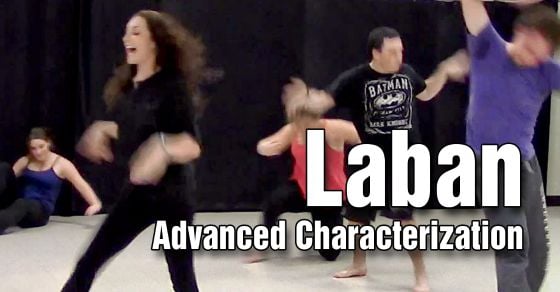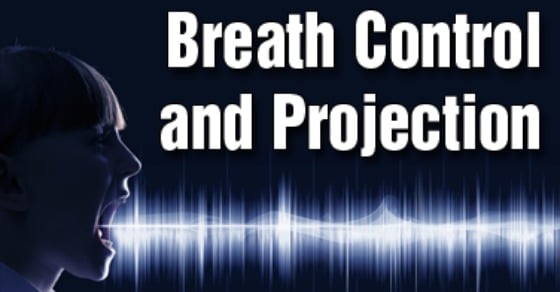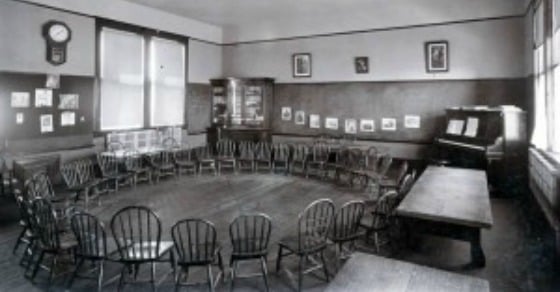The Eight Efforts: Laban Movement
If you want your students to take their character development to the next level, introduce them to Laban Movement. Laban Movement will provide them with a clear and understandable tool set that will enable them to grow their own movement vocabulary and discover new ways to physicalize character. This work is not just technical but spends time teaching the students to recognise and act upon creative impulse in the body.
What is Laban Movement?
For a long time Laban movement was primarily used for dancers and dance choreography to discover new ways to move. In the 80s and 90s, it began being used to help actors and improve performances. I first encountered Laban work while I was training at the Dell’Arte International School of Physical Theatre. While the Laban work comes out of modern dance exploration, at Dell’Arte they were using Laban’s Eight Efforts to explore character in the body. They used it as a way to extend an actor’s movement vocabulary and ability to play characters physically. The Eight Efforts became a cornerstone of my work as an actor. They help an actor both physically and emotionally identify and play characters who are different from themselves. This embodied work helps the actor in understanding internal impulse and in developing an expressive body that can make clean, precise choices. It also helps the actor create and maintain a strong physical instrument that will serve them throughout their training and future professional work.
Who is Laban?
Laban is named after Rudolf Laban , who was a movement theorist, a choreographer and a dancer. He is considered a pioneer of modern dance. Laban categorized human movement into four component parts:
- Direction
- Weight
- Speed
- Flow
Each of those parts has two elements:
- Direction is either direct or indirect.
- Weight is either heavy or light.
- Speed is either quick or sustained.
- Flow is either bound or free.
So, for example, if you’re looking at Flow and the movement is bound, then it’s very tight. It’s very held in. Think uptight businessman or administrator. Whereas someone who moves freely is the opposite of bound. Think of children. They are always running, always free. And if you’re looking at direction, you’re either moving toward something directly or you’re meandering toward it.
Laban then combined these parts together to create The Eight Efforts:
- Wring
- Press
- Flick
- Dab
- Glide
- Float
- Punch
- Slash
For each effort, Laban identified which component parts were to be used. For example:
For WRING
- The Direction is Indirect
- The Weight is Heavy
- The Speed is Sustained
- The Flow is Bound
How can you use Laban in the drama classroom?
Student actors have a hard time moving outside their own body. Every character they play, moves like they do. Introduce a process to students that gets them thinking about different ways to move. Then with every character they play, they have a vocabulary to draw from: Does this character move with a flicking movement? What weight does this character have? Am I bound or free?
There are many different ways an actor can begin to employ these efforts into their work.
Observational work: The actor can take time observing individuals and creatures in the world around them with an eye towards identifying the Eight Efforts within the movement and behaviour of the observed subjects. After careful observation and replication of the efforts, the actor can begin to apply what they observed to the creation of a character, borrowing elements of what they observed and rehearsed.
Text work: The actor can carefully analyze the text and look for speech patterns that are similar to the Eight Efforts. Our language is a representation of our inner lives. By looking at what and how the character expresses themselves, the actor can find clues for which one of the Eight Efforts to explore. For example – in A Midsummer Night’s Dream, the character of Peter Quince speaks in monosyllables.
QUINCE
Here is the scroll of every man’s name, which is
thought fit, through all Athens, to play in our
interlude before the duke and the duchess, on his
wedding-day at night.
His text is made up of short quick words. This could be a clue to the actor to try vocally playing Dab in the voice and seeing how vocally playing the Effort affects the body and the physicality of the character.
Playing off this same idea of using the text to find the Effort, Oberon (in A Midsummer Night’s Dream) talks a lot about aggressive hairy animals and seems to be aligned to the animal world. Many of the animals he speaks of have Alpha Males in their social hierarchy, which tend to be Heavy, Direct, Free and Quick. This might be a clue to the actor playing Oberon to play around with a Slashing quality in the voice.
Emotional work: One can look at the personality of the character and the emotional makeup of the character to look for what kind of Effort to experiment with. We can look at a character’s personality and think of them in terms of the Efforts. On the TV show South Park, the character of Carman is pushy and aggressive with his friends. He tends to try to dominate any situation he is in and is quick to anger. You could think of his personality as a Punch. Eeyore from Winnie-the-Pooh is light and indirect in his personality and the way he interacts with the world. He could be described as a Float or a Glide.
Ask your actors to look at their characters’ emotions or how they react to the world around them. This can help them find an effort to play.
Costuming: Finally, we can play around with costuming. What kind of costume is the actor called upon to wear or how does the period clothing inform the actor as to what effort to play?
If we think of Gwendolen from The Importance of Being Earnest She is usually costumed in light dainty fabrics that tend to have a great deal of lace on them. How can the actor translate the delicate nature of the fabrics and lace into an Effort? It is light and free – so could the actor play Glide? Or does the actor find the clothing light but binding and play Dab?
By experimenting with the Laban Efforts and ways to interpret them, you can create a language to give your students to get them out of their bodies, out of their shells and into a new physicalization.
What do the Eight Efforts look like?
If you’ve never used Laban before it is definitely like learning a new language. What does it mean to Punch or Glide?
Want to learn more? Check out the info page on Todd’s course Laban: Advanced Characterization for the Drama Teacher Academy. You can view the Introduction Video and learn more about other DTA courses.



